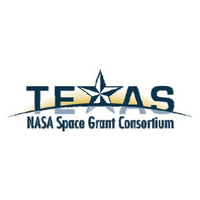Texas Space Grant Consortium
Zero Robotics

Zero Robotics (ZR) is an international programming competition where SPHERES satellites (the robots) inside the International Space Station (ISS) are controlled by programs developed by students. In the ZR Middle School Program, student teams create, edit, share, save, simulate and submit programming code in order to accomplish the task at hand (the competition goal changes each year). After several phases of competition within our state, regional finalists compete in a championship aboard the ISS against code from teams from across the nation and world. An astronaut uses the studentsâ code to conduct the championship competition in microgravity with a live broadcast.
The ZR Middle School Program is a five-week program. The curriculum is designed assuming students participate approximately 15 hours per week over the course of the five weeks (minimum of 75 hours total). A suggested flow of activities is provided in a teaching guide, which was designed to be tailored to support a variety of programming schedules.
Zero Robotics is sponsored by Massachusetts Institute of Technology (MIT), MIT Space Systemâs Laboratory, Aurora Flight Sciences and Innovation Learning Center with generous support from Northrop Grumman Foundation, Center for the Advancement of Science in Space, European Space Agency and National Aeronautics and Space Administration. Texas Zero Robotics was supported by Texas A&M Engineering Experiment Stationâs ASTRO Center and Texas A&M Engineeringâs PK-12 Engineering Education Outreach office, with generous financial support from Texas Space Grant Consortium.
The ZR Middle School Program has several specific objectives. It is designed to engage students in science, technology, engineering, and mathematics (STEM) through the ZR game and to make clear connections between STEM and space science. The curriculum integrates best practices for teaching and learning, including inquiry and collaboration, and encourages authentic assessments of student learning (in particular, formative assessments). Throughout the five weeks, connections are drawn between the ZR game, the middle school ZR program in its entirety, and the STEM content being taught in the middle grades and beyond. There are explicit linkages to STEM educational pathways and careers aimed at informing students about the many varied opportunities for success that STEM fields can offer. The program also provides multiple avenues for educators to grow professionally while supporting students at varying levels of skill and interest in STEM content and computer programming.

